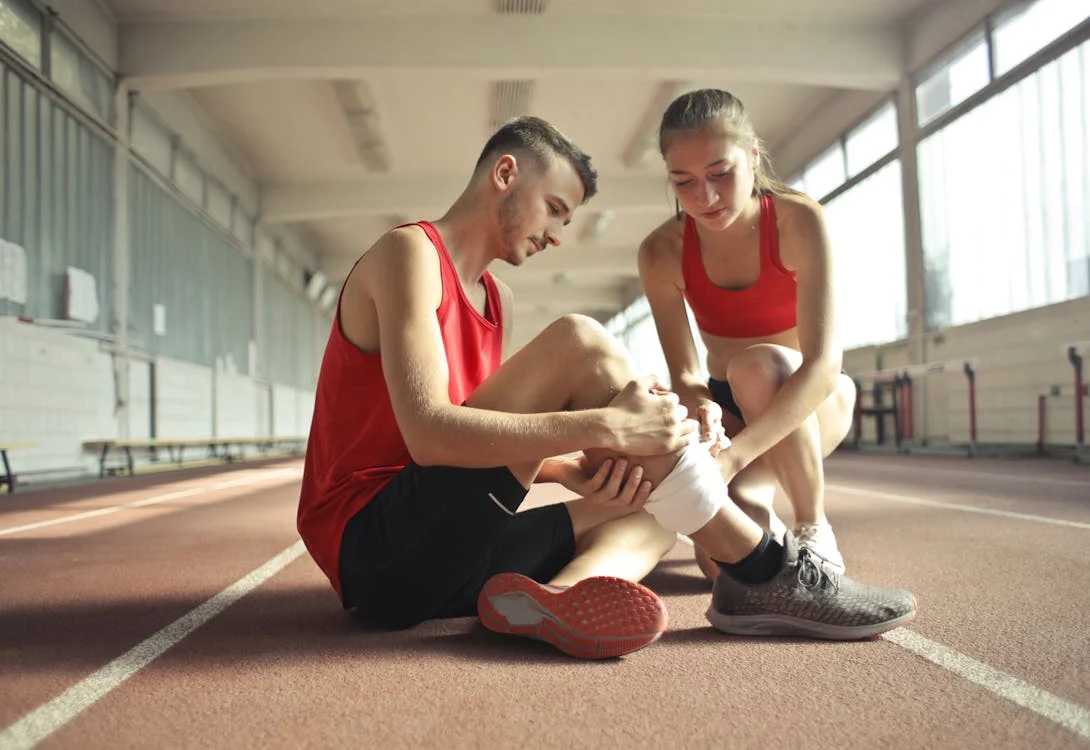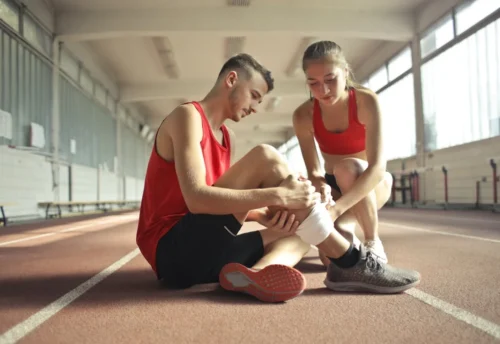
18 Mar How Some Athletes Overcome Sprains and Fractures More Efficiently
Recovering from a sprain or fracture can feel slow and frustrating. Yet some athletes heal much faster. What gives them an edge? Is it better training, recovery strategies, or something else? Many factors affect how quickly the body repairs itself after an injury.
In cities with strong sports communities, such as Denver, athletes benefit from advanced recovery programs designed to accelerate healing. Denver sports therapy clinics help them regain strength and mobility through targeted rehabilitation.
In this article, we’ll discuss how proper recovery techniques promote recovery and lower the chance of future injuries.
The Role of Early Diagnosis and Immediate Care
Quick and accurate diagnosis helps prevent complications and speeds up recovery. Delaying medical care can worsen an injury. Immediate treatment is essential for reducing pain and swelling. Key steps for early care include:
- Resting the injured area to prevent further strain
- Using ice to minimize inflammation
- Making use of compression to reduce swelling
- Elevating the injury to improve circulation and healing
Recovery time can be significantly reduced by following these measures.
The Conversation notes that ancient Egyptians used compression bandages to treat circulation issues and various health conditions. Research into pneumatic compression devices started in the 1950s to improve fluid flow and reduce swelling. These devices use air pressure to help veins and lymphatic vessels return fluids to the heart efficiently.
A proper cast or splint helps fractures heal correctly and prevents long-term damage. Medical guidance from the start is crucial for a smooth recovery. Athletes who seek treatment right away often bounce back much faster.
Quick action ensures a safer and more effective healing process. Sports medicine specialists can determine the severity of an injury and recommend the best course of action. Athletes who ignore minor pain risk turning a small issue into a long-term problem.
How do different sports injuries require unique early treatments?
Each injury type demands specific treatment to prevent complications. Muscle strains may need gentle stretching, while fractures require complete immobilization. Ligament tears might need bracing, while dislocations require immediate realignment. A proper diagnosis ensures the best approach, reducing unnecessary strain and optimizing recovery for different injuries.
Nutrition and Its Impact on Recovery
Eating the right foods helps the body heal after an injury. Calcium and vitamin D strengthen bones and speed up recovery. Protein helps rebuild muscles and tendons affected by a sprain or fracture.
An MDPI publications states that omega-3 supplements like DHA and EPA (N-3—specifically eicosapentaenoic acid) may help protect the brain and muscles from damage. Studies show they may reduce the impact of head injuries and improve recovery after physical injuries. People with higher omega-3 levels may also have a lower risk of muscle and tendon problems.
Nutrient-rich diets help athletes recover faster than those with poor eating habits. Proper hydration also plays a key role in tissue repair and overall recovery.
Athletes who consume enough vitamins and minerals create the best conditions for healing. Foods like leafy greens, salmon, eggs, and nuts provide essential nutrients that aid recovery. Reducing processed foods and excess sugar can help control inflammation and promote healing.
Please consult your health care provider for specific medical device regarding nutrition and any supplements you are taking or considering.
Can caffeine affect injury recovery?
Excessive caffeine can interfere with calcium absorption, which is crucial for bone healing. It also dehydrates the body, reducing circulation and slowing tissue repair. While moderate caffeine intake is generally safe, reducing consumption during recovery can help ensure better nutrient absorption and proper hydration for optimal healing.
The Role of Physical Therapy in Faster Recovery
Physical therapy helps injured athletes regain strength and mobility safely. Targeted rehabilitation programs prevent stiffness and speed up recovery.
NIH mentions that sports physical therapists should engage with athletes at all levels, from youth to professionals. Active participation in local sports communities helps expand their role beyond treating injuries. Prevention and education programs reduce the risk of sports-related conditions before they happen.
Therapists often design customized plans to restore flexibility and reduce pain.
According to Total Physical Therapy, athletes who complete therapy sessions recover more efficiently than those who rely on rest alone. A structured rehabilitation process focuses on rebuilding strength while reducing the risk of re-injury. Proper therapy also improves balance, posture, and coordination, ensuring a smoother return to sports.
Controlled movements help the body heal properly while avoiding excess strain. Regular therapy sessions support recovery while teaching athletes how to prevent future injuries and maintain peak performance.
Can physical therapy reduce reliance on pain medication?
Therapy techniques like massage, targeted exercises, and electrical stimulation relieve pain naturally. Strengthening the injured area reduces stress on surrounding tissues, decreasing discomfort over time. With proper rehabilitation, athletes can avoid long-term medication use, reducing risks of dependency or side effects from prolonged painkiller consumption.
Mental Resilience and Its Impact on Recovery
A strong mindset helps athletes recover faster from injuries. Staying positive and focused makes a big difference in healing speed. Setting small goals keeps motivation high during recovery. Visualization techniques help athletes stay engaged in the healing process.
Athletes who stay proactive and follow expert advice see better results. A combination of mental strength and physical effort leads to a faster, safer recovery. Stress and frustration can slow down healing.
As per Next Avenue, studies show that even small injuries can cause psychological distress and slow recovery. Research indicates that long-term healing is harder when mental health challenges accompany physical injuries. Data highlights a strong link between minor injuries and emotional well-being in aging populations.
Meditation, breathing exercises, and mental coaching help athletes stay focused and patient. Surrounding oneself with a strong support system of coaches, therapists, and teammates also boosts confidence.
Why is visualization useful in injury recovery?
Visualization helps maintain the mind-body connection, reinforcing neural pathways for movement. Studies show that athletes who mentally rehearse returning to activity experience quicker coordination improvements. This technique keeps the brain engaged with recovery, reducing anxiety and improving overall rehabilitation success by reinforcing confidence and movement efficiency.
Optimizing recovery from sprains and fractures goes beyond healing, it requires a holistic approach. Fast, precise medical care speeds up recovery and prevents complications.
Targeted nutrition fuels tissue repair and reduces inflammation. Structured physical therapy restores strength and flexibility. Mental resilience, visualization, and emotional support keep athletes motivated. Combining these strategies helps athletes recover faster and avoid future injuries.
More information:
The information on MedicalResearch.com is provided for educational purposes only, and is in no way intended to diagnose, cure, or treat any medical or other condition.
Some links are sponsored. Products, providers and services are not warranted or endorsed.
Always seek the advice of your physician or other qualified health and ask your doctor any questions you may have regarding a medical condition. In addition to all other limitations and disclaimers in this agreement, service provider and its third-party providers disclaim any liability or loss in connection with the content provided on this website.
Last Updated on March 18, 2025 by Marie Benz MD FAAD

